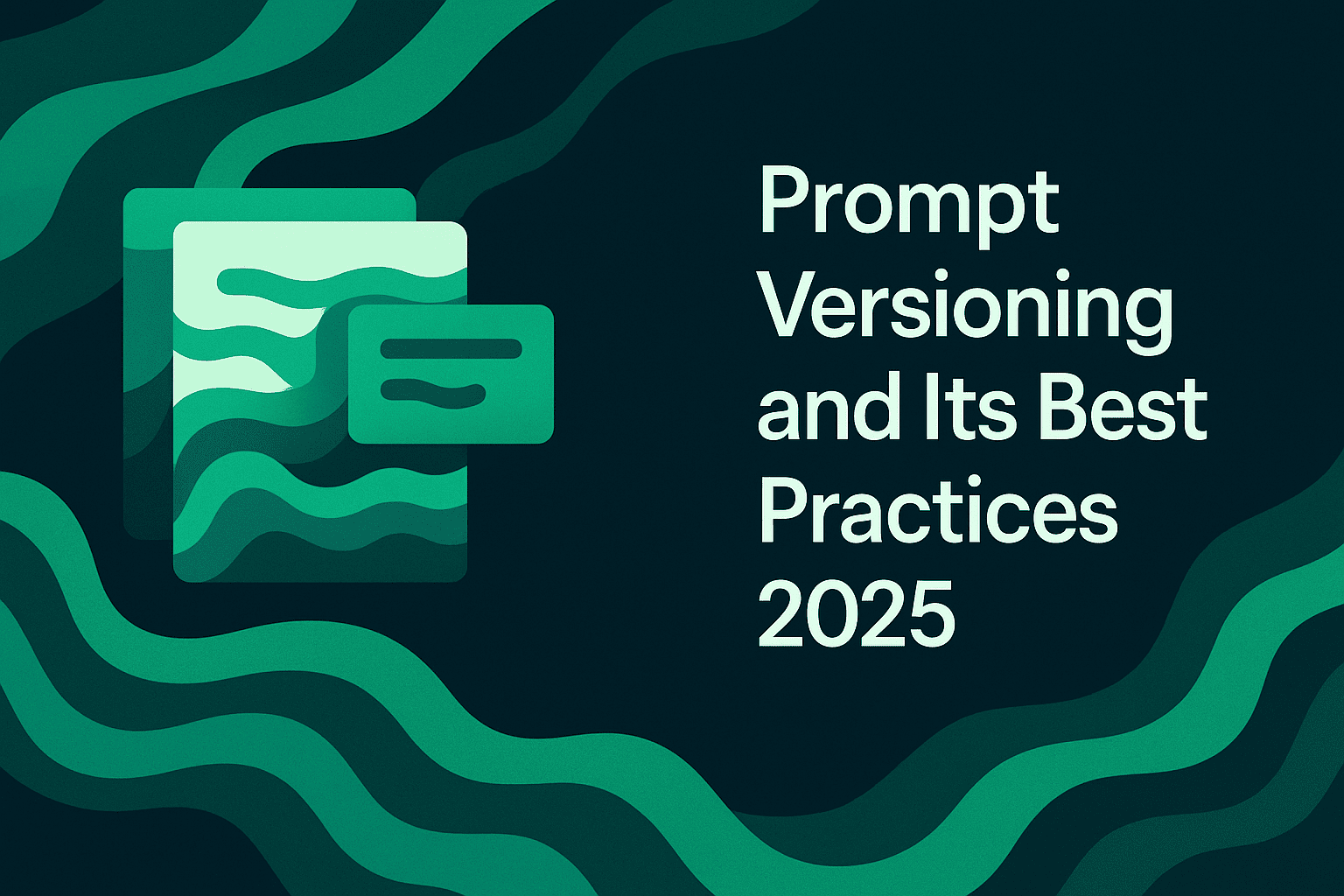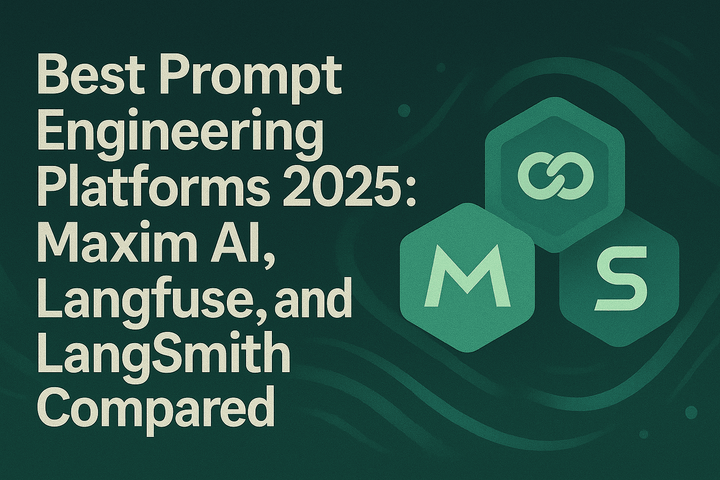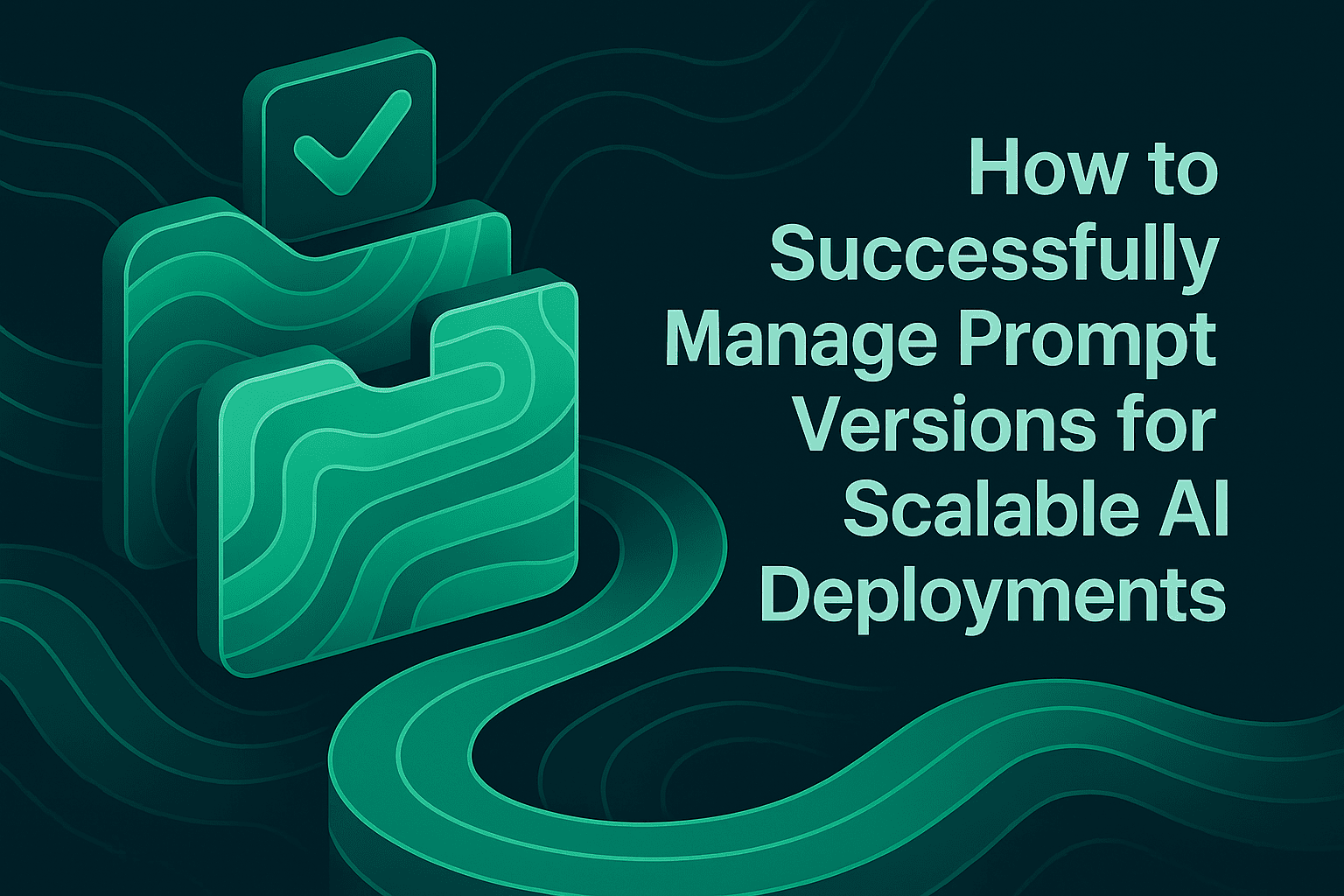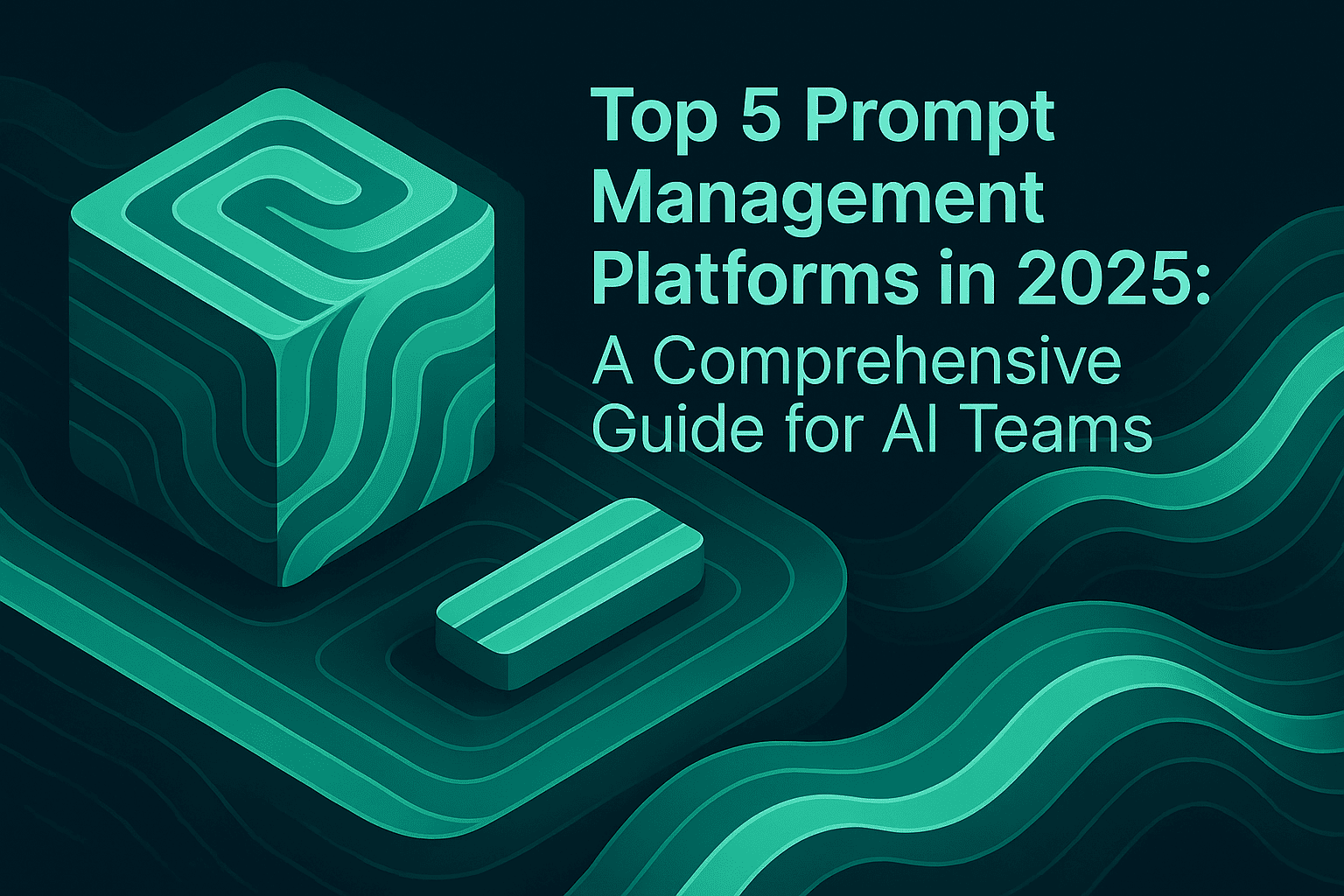Prompt versioning and its best practices 2025

TL;DR
Prompt versioning is essential for building reliable, scalable, and trustworthy AI applications. By adopting best practices such as prompt versioning, clear documentation of prompt versions, robust rollback strategies, and leveraging tools like Maxim AI, teams can ensure prompt quality, streamline collaboration, and minimize operational risks which include unintended model behavior, downtime, and compliance issues.. This guide covers actionable strategies and technical recommendations for effective prompt management in modern AI workflows.
Introduction
Prompt engineering is at the heart of modern AI development, powering everything from chatbots to advanced agentic systems. As AI applications grow in complexity, managing and versioning prompts becomes critical for ensuring quality, traceability, and rapid iteration. Without a structured approach to prompt versioning, teams risk introducing regressions, losing context, and facing challenges in debugging or rolling back faulty updates.
This blog explores the best practices for prompt versioning, drawing on industry standards and actionable insights. We’ll cover prompt versioning, documentation of every change in the prompts versions, rollback strategies, and how platforms like Maxim AI enable robust prompt management for technical teams.
Why Prompt Versioning Matters in AI Development
Prompt versioning is the process of systematically tracking and managing changes to prompts used in AI agents. As AI systems become more dynamic and multi-modal, prompt versioning ensures:
- Traceability: Every change is logged, making it easy to audit and debug.
- Collaboration: Multiple teams can work on prompts without overwriting each other’s work.
- Reliability: Rollbacks and recovery are straightforward, reducing downtime and risk.
- Continuous Improvement: Teams can experiment, measure, and iterate on prompts with confidence.
In regulated industries or production environments, versioning is not just a best practice, t’s a necessity for compliance and operational excellence.
Best Practices for Prompt Versioning
1. Adopt Semantic Versioning for Prompts
Semantic versioning (SemVer) is a proven framework for tracking changes in software and is equally effective for prompt management. Use a three-part version number (X.Y.Z):
- Major (X): Significant structural changes (e.g., overhauling the prompt framework).
- Minor (Y): New features or context parameters (e.g., adding new evaluation criteria).
- Patch (Z): Small fixes (e.g., correcting typos or minor tweaks).
This approach provides clarity and consistency, making it easy to identify the impact of each update. For example, moving from v1.0.0 to v1.1.0 signals a new feature, while v1.0.1 indicates a minor fix. Learn more about semantic versioning.
2. Ensure Clear and Actionable Prompt Contexts
A well-defined prompt context is essential for guiding LLMs to deliver consistent and accurate results. Here’s how to structure effective prompts:
- Precise Instructions: Clearly state the task and expected output.
- Relevant Examples: Provide sample inputs and outputs to clarify intent.
- Defined Limitations: Specify what the LLM should avoid or focus on.
For instance, when building agent evaluation or rag tracing workflows, clarity in prompt design directly impacts the reliability of downstream evaluations. Maxim AI’s documentation offers detailed guidance on prompt engineering and best practices for context definition.
3. Document Every Change and Monitor Performance
Effective prompt management requires meticulous documentation and performance tracking:
- Change Logs: Record what was changed, why, and by whom.
- Performance Metrics: Track user satisfaction, error rates, and output quality after each update.
- Access Control: Define who can modify or deploy prompts to maintain consistency.
Automated tools and platforms like Maxim AI simplify this process by providing built-in version histories, audit trails, and performance dashboards. This is especially valuable for ai monitoring, llm observability, and model evaluation workflows.
4. Implement Robust Rollback and Recovery Strategies
No matter how rigorous your process, issues can arise. Having a robust rollback strategy is essential:
- Feature Flags: Enable or disable specific prompt versions without redeploying code.
- A/B Deployments: Run two environments (stable and testing) for seamless transitions.
- Health Monitoring: Track system metrics (fault rates, latency, resource usage) to trigger rollbacks when needed.
Platforms like Maxim AI support automated rollback and checkpointing, allowing teams to revert to stable prompt versions quickly and minimize user impact. Read more about agent observability and rollback strategies.
5. Leverage Tools for Centralized Prompt Management
Centralized prompt repositories and management tools streamline collaboration and version control. Key features to look for include:
- Automated Versioning: Track every change with detailed metadata.
- Dependency Tracing: Understand how prompt changes affect downstream systems.
- Performance Analysis: Visualize the impact of updates on key metrics.
- Integration: Seamlessly connect with RAG pipelines, evaluation frameworks, and observability tools.
Maxim AI offers a full-stack platform for prompt management, llm evaluation, and ai observability, making it easy for cross-functional teams to collaborate and iterate.
How Maxim AI Enables Effective Prompt Versioning
Maxim AI is purpose-built to address the challenges of prompt versioning and management in modern AI workflows. Here’s how Maxim AI stands out:
End-to-End Prompt Lifecycle Management
- Experimentation: Organize, version, and deploy prompts directly from the UI. Compare output quality, cost, and latency across different prompt versions and models. Explore Maxim’s Experimentation Suite.
- Simulation: Test AI agents across hundreds of scenarios and user personas. Re-run simulations to debug and improve agent performance. Learn about Agent Simulation and Evaluation.
- Evaluation: Access off-the-shelf and custom evaluators for quantitative and qualitative assessments. Visualize evaluation runs across multiple prompt versions. See Maxim’s Evaluation Framework.
- Observability: Monitor real-time production logs, run automated evaluations, and receive alerts for quality issues. Discover Maxim’s Observability Suite.
Collaboration and Access Control
Maxim AI’s platform is designed for seamless collaboration between AI engineers, product managers, and QA teams. Features like custom dashboards, flexible evaluators, and granular access controls ensure that only authorized users can modify or deploy prompts, maintaining consistency and security.
Automated Rollback and Checkpointing
With built-in support for feature flags, blue/green deployments, and automated checkpointing, Maxim AI enables rapid rollback and recovery. Teams can monitor key metrics and revert to stable prompt versions with minimal disruption.
Deep Integration and Extensibility
Maxim AI integrates with popular AI SDKs, RAG pipelines, and data management tools, providing a unified interface for prompt management, evaluation, and observability. This extensibility is critical for organizations scaling their AI operations.
Conclusion
Prompt versioning is a foundational practice for building reliable, scalable, and trustworthy AI applications. By adopting semantic versioning, clear documentation, robust rollback strategies, and leveraging platforms like Maxim AI, teams can ensure prompt quality, streamline collaboration, and minimize operational risks.
To see how Maxim AI can transform your prompt management workflows, request a demo or sign up today.
FAQs
What is prompt versioning and why is it important?
Prompt versioning is the systematic tracking and management of changes to prompts used in AI applications. It ensures traceability, collaboration, and reliability, making it easier to audit, debug, and roll back changes.
How does Maxim AI support prompt versioning?
Maxim AI provides end-to-end tools for organizing, versioning, and deploying prompts, along with automated rollback, performance monitoring, and collaboration features.
What are the best practices for prompt versioning?
Adopt semantic versioning, maintain clear documentation, monitor performance, implement robust rollback strategies, and use centralized management tools.
How can I get started with Maxim AI?
Visit Maxim AI’s demo page or sign up to explore the platform and see how it can streamline your AI workflows.
Further Reading and Resources:


